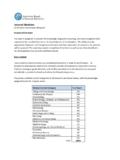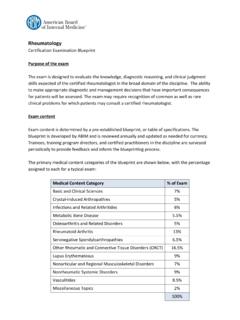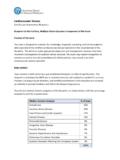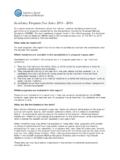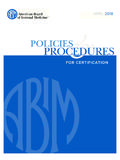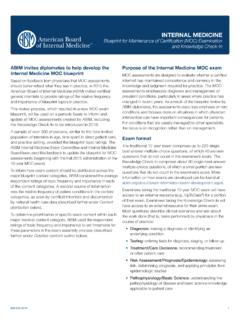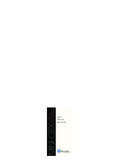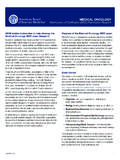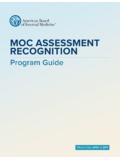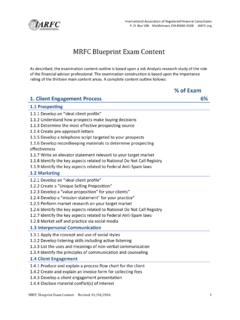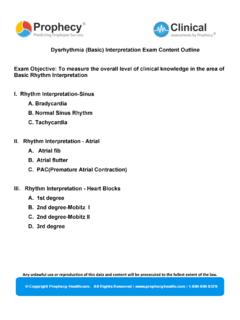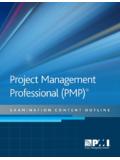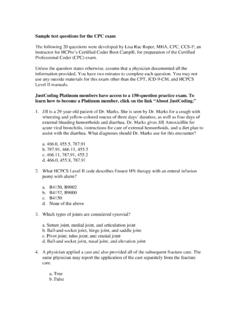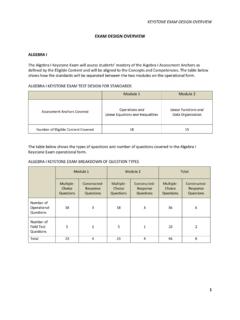Transcription of Purpose of the exam Exam content - ABIM.org
1 Infectious Disease Certification Examination Blueprint Purpose of the exam The exam is designed to evaluate the knowledge, diagnostic reasoning, and clinical judgment skills expected of the certified infectious disease specialist in the broad domain of the discipline. The ability to make appropriate diagnostic and management decisions that have important consequences for patients will be assessed. The exam may require recognition of common as well as rare clinical problems for which patients may consult a certified infectious disease specialist. Exam content Exam content is determined by a pre established blueprint, or table of specifications. The blueprint is developed by abim and is reviewed annually and updated as needed for currency. Trainees, training program directors, and certified practitioners in the discipline are surveyed periodically to provide feedback and inform the blueprinting process.
2 The primary medical content categories of the blueprint are shown below, with the percentage assigned to each for a typical exam: Medical content Category % of Exam Bacterial Diseases 27% Human Immunodeficiency Virus (HIV) Infection 15% Antimicrobial Therapy 9% Viral Diseases 7% Travel and Tropical Medicine 5% Fungi 5% Immunocompromised Host (Non HIV Infection) 5% Vaccinations 4% Infection Prevention and Control 5% General Internal Medicine, Critical Care and Surgery 18% 100% 2 Exam questions in the content areas above may also address clinical topics in clinical syndromes and general internal medicine that are important to the practice of infectious disease. Exam format The exam is composed of multiple choice questions with a single best answer, predominantly describing patient scenarios.
3 Questions ask about the work done (that is, tasks performed) by physicians in the course of practice: Making a diagnosis Ordering and interpreting results of tests Recommending treatment or other patient care Assessing risk, determining prognosis, and applying principles from epidemiologic studies Understanding the underlying pathophysiology of disease and basic science knowledge applicable to patient care Clinical information presented may include patient photographs, radiographs, electrocardiograms, recordings of heart or lung sounds, and other media to illustrate relevant patient findings. A tutorial including examples of abim exam question format can be found at The blueprint can be expanded for additional detail as shown below. Each of the medical content categories is listed there, and below each major category are the content subsections and specific topics that may appear in the exam.
4 Please note: actual exam content may vary. Bacterial Diseases 27% of Exam Gram positive cocci Staphylococcus aureus Streptococcus Enterococcus Gram positive rods <2% Listeria Corynebacterium Bacillus Erysipelothrix Gram negative cocci and coccobacilli 2% Neisseria 3 Haemophilus Gram negative rods Enterobacteriaceae Pseudomonas Stenotrophomonas Burkholderia Acinetobacter Aeromonas Salmonella Shigella Campylobacter Vibrio Pasteurella Yersinia Legionella Capnocytophaga Bartonella Brucella Bordetella Streptobacillus Francisella Helicobacter Anaerobes Gram positive cocci Gram positive rods Gram negative rods Actinomycetes <2% Actinomyces Nocardia Spirochetes <2% Treponema
5 Borrelia Leptospira Mycoplasma <2% M. pneumoniae M. genitalium Tropheryma whipplei <2% Chlamydia <2% C. trachomatis C. pneumoniae C. psittaci 4 Rickettsia R. conorii R. akari R. rickettsii R. prowazekii R. typhi Orientia tsutsugamushi R. parkeri R. africae Coxiella burnetii Erlichia <2% E. chaffeensis E. ewingii Anaplasma phagocytophilum Mycobacterium 5% M. tuberculosis M. bovis M. lepri Nontuberculous mycobacteria Syndromes characterized by bacterial pathogens 3% Head and neck Respiratory Gastrointestinal Ophthalmologic Genitourinary Dermatologic (including skin and soft tissue infections) Musculoskeletal Neurologic Cardiovascular Human Immunodeficiency Virus (HIV)
6 Infection 15% of Exam Epidemiology <2% Transmission Testing and counseling Initial laboratory evaluation Prevention Pathogenesis <2% Virology Immunopathogenesis Acute HIV infection 5 Laboratory testing <2% Diagnostic evaluation Baseline evaluation HIV treatment regimens Antiretroviral therapy drug classes Adverse effects of treatment Drug drug interactions When to start therapy Selection of optimal initial regimen Laboratory monitoring Treatment experienced patients Opportunistic infections (OIs) 5% Prevention When to start HIV therapy in the context of active OIs Immune reconstitution inflammatory syndrome Bacteria Mycobacteria Fungi Parasites Viruses Malignancies <2% Kaposi's sarcoma Lymphoma Cervical cancer Anal cancer Other complications of HIV 2% Hematologic Endocrine Gastrointestinal Renal (HIV associated nephropathy [HIVAN]) Cardiac (HIV cardiomyopathy)
7 Pulmonary Head, eye, ear, nose, and throat Musculoskeletal Neurologic Psychiatric Dermatologic Related issues <2% Substance use Organ transplantation Primary care 6 Miscellaneous non HIV related complications that may occur more commonly in those who have HIV Pregnancy Antimicrobial Therapy 9% of Exam Antibacterials Aminoglycosides Antifolates Carbapenems Cephalosporins Chloramphenicol Fluoroquinolones Fusidanes Glycopeptides, glycolipopeptides, and lipopeptides Lincosamides Macrolides Monobactams Nitroimidazoles Oxazolidinones Penicillins Polymyxins Rifamycins Streptogramins Tetracyclines Non sulfonamide (sulfa drug), non trimethoprim urinary tract agents Topical antibacterials Other routes of administration Antivirals (non HIV) <2% For influenza For herpes simplex For cytomegalovirus For hepatitis C and respiratory syncytial virus (RSV) For hepatitis B Interferon alfa 2a and alfa 2b For hepatitis C Miscellaneous and topical agents Pharmacology and outpatient parenteral antimicrobial therapy (OPAT) Susceptibility testing Drug resistance 7 ADME (absorption, distribution, metabolism, and excretion)
8 Dosing Drug interactions Toxicity Outpatient parenteral antimicrobial therapy Viral Diseases 7% of Exam DNA viruses 4% Herpesviruses Adenovirus Papillomavirus Polyomavirus Poxviruses Hepadnaviridae Parvovirus RNA viruses Reoviridae Togaviridae Flaviviridae Coronaviridae Paramyxoviridae Rhabdoviridae Filoviridae (hemorrhagic fever viruses) Orthomyxoviridae (influenza) Bunyaviridae Arenaviridae Non HIV retroviridae Picornaviridae Calciviridae Hepatitis E Prions <2% Travel and Tropical Medicine 5% of Exam Protozoal intestinal infections <2% Balantidium coli Blastocystis hominis Cryptosporidium parvum and C. hominis Cyclospora cayetanensis Cytoisospora belli (formerly Isospora belli) Dientamoeba fragilis Entamoeba histolytica (amebiasis) 8 Giardiasis Microsporidiosis Protozoal extraintestinal infections <2% Amebic meningoencephalitis Babesiosis Leishmaniasis Malaria Toxoplasmosis Trichomonas vaginalis Trypanosomiasis (general) Nematode intestinal infections <2% Anisakiasis Ascaris lumbricoides (ascariasis) Capillaria philippinesis (capillariasis) Enterobius vermicularis (pinworm) Hookworm Strongyloides stercoralis Trichuris trichiura (whipworm) Nematode extraintestinal infections <2% Angiostrongylus cantonensis Bayliascariasis (raccoon roundworm) Cutaneous larva migrans (dog and cat hookworm)
9 Dracunculus medinensis (Guinea worm) Filariasis Gnathostoma spinigerum Toxocariasis Trichinella spiralis (trichinellosis) Cestode infections <2% Diphyllobothrium latum (fish tapeworm) Hymenolepis (dwarf tapeworm) Echinococcus granulosus (hydatid disease) Echinococcus multilocularis (alveolar disease) Taenia saginata (beef tapeworm) Taenia solium (pork tapeworm; intestinal) Trematode infections (flukes) <2% Clonorchis sinensis (Chinese liver fluke) Fasciolopsis buski (intestinal fluke) Fasciola hepatica and gigantica (sheep liver fluke) Paragonimus westermani (lung fluke) Schistosomiasis (general) 9 Ectoparasitic infections <2% Myiasis (human botfly or tumbu fly) Pediculus humanus (body, head, and pubic lice) Tick bites identification and tick paralysis Tungiasis (Tunga penetrans) Bed bugs General principles of travel medicine <2% Pretravel preparation Post travel Illness Immigrants, refugees, and adoptees Travelers with specific needs Fungi 5% of Exam Yeasts <2% Candida Cryptococcus Other yeasts (including Trichosporon and Saccharomyces)
10 Endemic mycoses <2% Histoplasma Blastomyces dermatitidis Coccidioides immitis (C. posadasii) Sporothrix schenckii Paracoccidioides brasiliensis Penicillium marneffei Molds <2% Aspergillus Hyaline molds Agents of zygomycosis (mucormycosis) Dematiaceous molds (Bipolaris, Exophila, and others) Superficial and subcutaneous mycoses <2% Mycetoma Chromoblastomycosis Malassezia Dermatophytes Pneumocystis jiroveci pneumonia (PJP) <2% Therapy <2% Pharmacokinetics Drug interactions Spectrum Toxicity Prophylaxis 10 Susceptibility testing Drug resistance Diagnostic testing <2% Histopathology Culture Nonculture methods Syndromes <2% Mucosal Skin Pulmonary Central nervous system and eyes Cardiac Disseminated Immunocompromised Host (Non HIV Infection)
